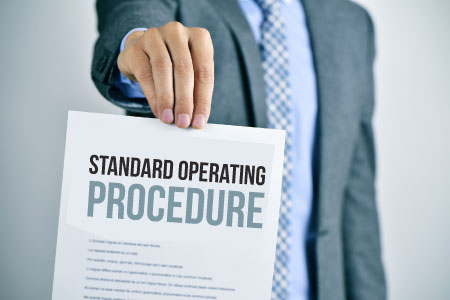Almost every Food and Drug Administration (FDA) inspection includes a review of standard operating procedures (SOPs), and adverse agency findings often stem from SOP administration issues. Everyone should have good (if not great) SOPs—they are required for all life sciences sector companies. Yet the FDA offers little instruction for writing, organizing, and maintaining SOPs. In other words, complying with the FDA’s SOP rules is tough.
FDA compliance expert Angela Bazigos shows why great SOPs are so critical and lays out a framework for writing them in her live webinar for Audio Educator, “2018 Update: How to Write Effective SOPs for FDA Inspection and Regulatory Compliance.” Bazigos uncovers the links between SOPs and regulations and reveals how SOPs should be incorporated into your company’s regulatory infrastructure. She also offers great tools for SOP tracking and clues for when validation is required.
SOPs: A First Line of Defense Against Poor Quality—and Lawsuits
Don’t make the mistake of thinking SOPs aren’t critical to your overall Good Manufacturing Practices (GMP) compliance strategy.
FDA warning letters can be triggered by customer complaints, whistleblowers, and a host of other issues, but a surprising number of violations stem from a company’s failure to have to properly use SOPs, reports BioPharm International. SOPs, the group says, are “the most fundamental component of current [GMPs].”
Why: SOPs ensure that essential job tasks are done correctly, consistently, and to internal procedures; they are a first line of defense against poor quality, regulatory infractions, and litigation.
But for something so critical to performance and safety, FDA offers scant help for those who need to actually write SOPs. Regulation 21 CFR 211.100 states, “There shall be written procedures for production and process control designed to assure that the drug products have the identity, strength, quality, and purity they purport or are represented to possess. Such procedures shall include all requirements in this subpart. These written procedures, including any changes, shall be drafted, reviewed, and approved by the appropriate organizational units and reviewed and approved by the quality control unit.”
Good SOPs: Focus on Legibility, Active Verbs, and Engaging Titles
You can get better instruction from industry insiders.
For instance, a 2016 study published in PLOS: Neglected Tropical Diseases laid out basic principals for good SOPs, including:
- Use a unique and meaningful title
- Write in simple, clear language
- Avoid acronyms
- Use the second person pronoun “you”
- Write in an active voice
- Put warnings before actions
- First write the instruction, then the reasoning behind it
- Stress important information in bold
- Use drawings in favor of photographs
While writing SOPs is mandatory for many companies, getting employees to read them once they are written is another matter, added BioPharm International. Luckily, technology offers a fix for this: You can add graphics, animation, sound, and simulation to written SOPs “to illustrate proper procedures and processes, rather than merely explain them” and to “engage employees and enhance comprehension.”
The tools are present and the challenge is clear, says Bazigos: Now is the time to create better, useful, and compelling SOPs.

